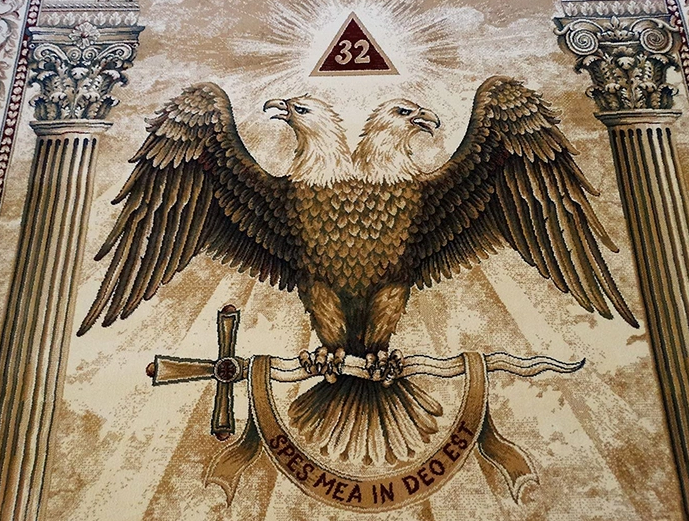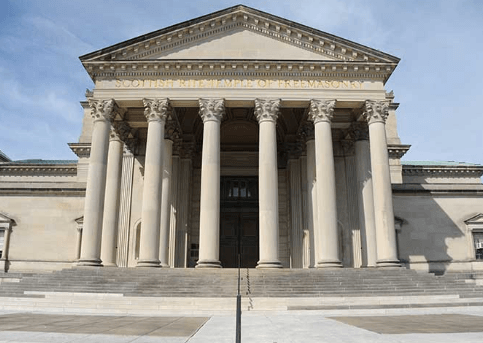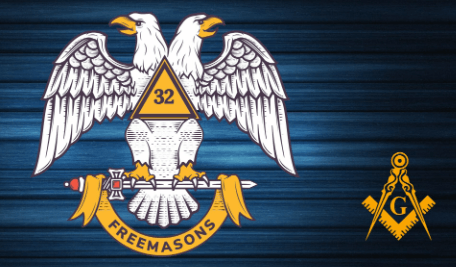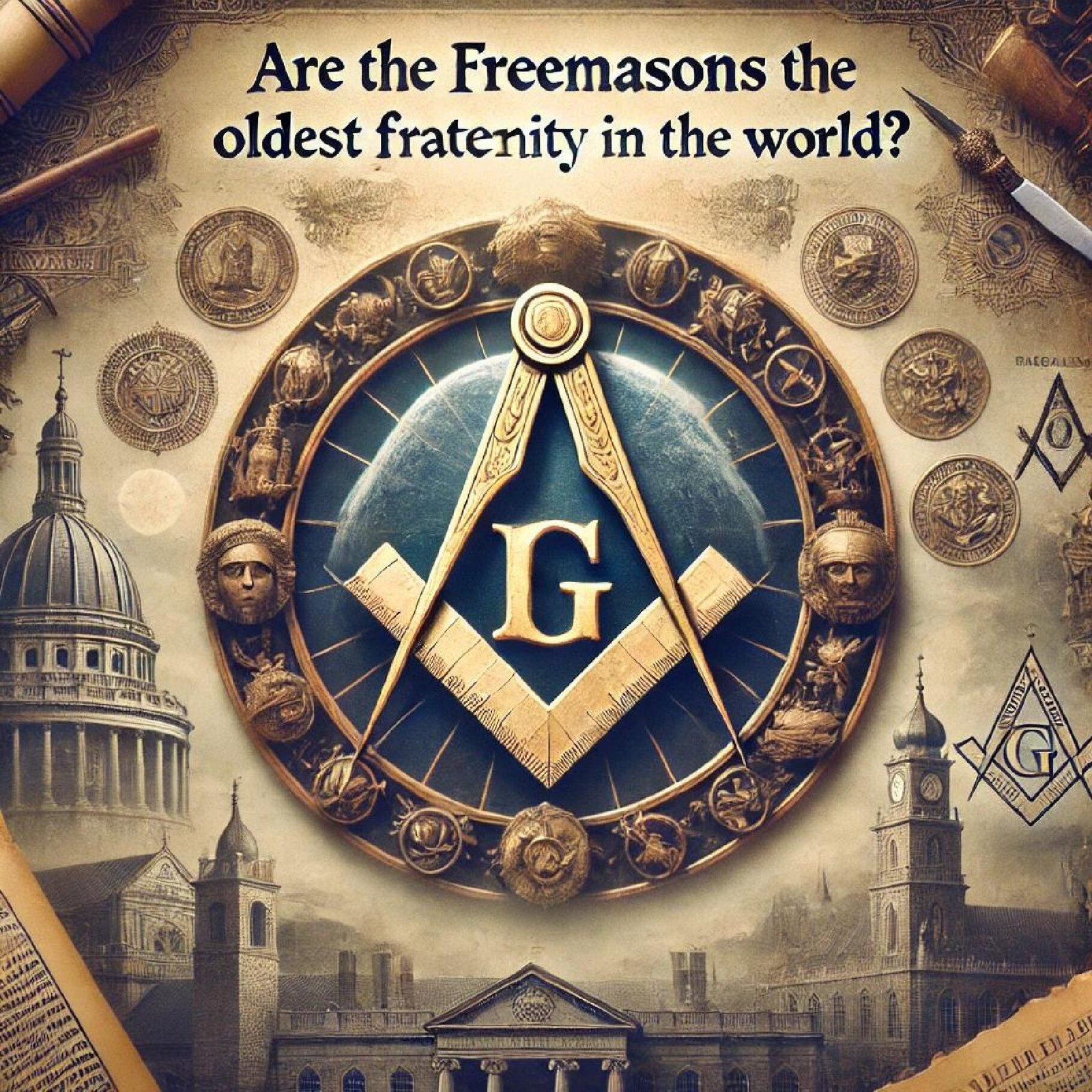
Delve into the rich history, culture, and traditions of the Scottish Rite, a prominent Masonic organization with deep roots in Freemasonry. Discover the esoteric teachings, philosophical insights, and intricate rituals that have captivated members for centuries. Uncover the symbolic significance behind the degrees, from the 4th to the 32nd, each offering profound lessons and moral guidance. Explore how the Scottish Rite has evolved over time, blending ancient wisdom with modern relevance to foster personal growth and enlightenment. Join us on a journey through this esteemed fraternity’s past, present, and enduring legacy.



Table of Contents
ToggleKey Takeaways
- Joining the Scottish Rite: Consider exploring the process of joining the Scottish Rite, craft, council, jurisdictions, and grand commander to deepen your understanding of its traditions and values.
- Symbols and Practices: Pay attention to the symbols, craft, and practices within the Scottish Rite as they hold significant meanings, degrees, and teachings in various jurisdictions and council.
- Current Role and Activities: Stay updated on the current role and activities of the Scottish Rite to engage with its ongoing impact and contributions.
- Famous Members and Influence: Reflect on the influence of famous members within the Scottish Rite to appreciate its historical and societal significance.
- Challenges and Resilience: Acknowledge the challenges faced by the Scottish Rite and learn from its resilience in preserving its legacy and values.
- Actionable Insight: Explore the rich history, values, and community of the Scottish Rite by attending events, engaging with members, and delving into its literature.
Origins and Evolution

Early Beginnings
The Scottish Rite traces its roots back to the early 18th century when it emerged as a system within Freemasonry. Initially, it was known as the “Rite of Perfection” with 25 degrees. With time, the ancient Scottish Rite council expanded and evolved, incorporating more degrees, rituals, and lodges. In 1761, the “Council of Emperors of the East and West” in Paris introduced the additional high degrees in ancient lodges.Spread to America
The Scottish Rite gained significant popularity in America during the late 18th and early 19th centuries. It was officially established in the United States in 1801 when the first Supreme Council, which included ancient degrees and lodges, was founded in Charleston, South Carolina. Over the years, various Supreme Councils were formed across different states, contributing to the growth and dissemination of the Scottish Rite teachings.Reorganization and Standardization
In 1867, a reorganization took place within the Scottish Rite, leading to the formation of a governing body called the Northern Masonic Jurisdiction (NMJ) council in America. This restructuring aimed to standardize rituals and practices across different regions. The Southern Jurisdiction also underwent reorganization during this period, further solidifying the structure and governance of the Scottish Rite organization.Modern Practices
Today, the Scottish Rite, an ancient council of degrees, comprises two main jurisdictions in America: the Southern Jurisdiction based in Washington D.C. and the Northern Masonic Jurisdiction headquartered in Lexington, Massachusetts. Each jurisdiction is responsible for overseeing its respective states. The Scottish Rite continues to uphold its ancient traditions while adapting to modern times by incorporating educational programs, charitable initiatives, community outreach efforts, degrees, and council.Understanding Degrees and Structure

Degrees Overview
The Scottish Rite is structured around a series of degrees, each offering unique teachings and rituals. These degrees are organized into four bodies: the Lodge of Perfection, Chapter of Rose Croix, Council of Kadosh, and Consistory. Navigating through the degrees involves a progression from the 4th to the 32nd degree, with each degree imparting specific moral lessons and symbolic teachings. The higher degrees delve deeper into philosophical concepts and esoteric knowledge.Symbolism and Rituals
Symbolism plays a crucial role in the Scottish Rite, with each degree and council rich in symbolic meaning. Rituals are meticulously designed to convey moral lessons and virtues to the members. For example, the 14th degree emphasizes the importance of truthfulness and integrity. Rituals are conducted in elaborate ceremonies that involve dramatic performances, allegorical presentations, and symbolic gestures. These rituals aim to instill moral values while fostering a sense of fraternity among members.Organizational Structure
The Scottish Rite is governed by Supreme Councils at both regional and national levels. The Supreme Council oversees the administration of the Rite, including the conferral of degrees, ritualistic practices, and organizational governance. Within each jurisdiction, Valleys are established to coordinate local activities and facilitate communication among members. Valleys serve as centers for degree conferrals, educational programs, social gatherings, and charitable initiatives.Membership Requirements
Joining the Scottish Rite typically requires being a Master Mason in good standing within a recognized Masonic Lodge. Prospective members must demonstrate a commitment to upholding Masonic principles, values, and traditions. Members are encouraged to actively participate in lodge activities, attend meetings regularly, engage in educational programs, and contribute to charitable endeavors. Maintaining active involvement fosters personal growth, fraternal bonds, and community service opportunities.Symbols and Practices
Symbolism
Scottish Rite Freemasonry is rich in symbolism, with each symbol holding deep significance across degrees and council. The double-headed eagle symbolizes the duality of earthly and spiritual realms within a Mason’s life. This emblem, known as the “Eagle of Lagash,” represents wisdom, power, and guardianship. The compass and square are fundamental symbols representing morality and virtue. They remind members to act with fairness and integrity in all aspects of life. The all-seeing eye symbolizes the watchful guidance of a higher power over human affairs.Rituals
Rituals play a crucial role in Scottish Rite ceremonies, conveying moral lessons through allegorical teachings. The ceremonies are elaborate and meticulously choreographed, emphasizing the importance of brotherhood, charity, and personal growth. Each degree ceremony imparts specific teachings and values to members.Practices
Members of the Scottish Rite council engage in various practices aimed at fostering personal development, spiritual enlightenment, and degrees. Lectures are frequently held to educate members on Masonic history, philosophy, and symbolism. These sessions provide valuable insights into the organization’s principles and values.Charity Work
Charity is a cornerstone of Scottish Rite Freemasonry, with members actively involved in philanthropic endeavors. Through their charitable efforts, Scottish Rite Masons support various community initiatives, including scholarship programs, healthcare services for children with speech disorders, and disaster relief efforts.Brotherhood
Central to Scottish Rite Freemasonry is the concept of brotherhood among members. The organization fosters a strong sense of camaraderie and mutual support among its members. Through shared experiences and common values, Scottish Rite Masons forge lasting bonds that transcend geographical boundaries.Esoteric Knowledge
Scottish Rite Freemasonry delves into esoteric knowledge, exploring mystical teachings that seek to deepen members’ understanding of themselves and the world around them through council and degrees. The organization’s rituals and teachings contain layers of symbolic meaning that invite contemplation and introspection.Joining the Scottish Rite

Membership Process
Joining the Scottish Rite is a straightforward process that involves several steps, degrees, and council. Firstly, individuals must be Master Masons in good standing with a regular Blue Lodge. Next, they can petition to join the Scottish Rite through their local Valley or Orient. Upon acceptance, candidates go through a series of degrees that delve deeper into Masonic teachings, philosophies, and council.Degrees and Rituals
One of the key aspects of joining the Scottish Rite is experiencing its unique degrees and rituals. Members progress through 29 degrees, each offering valuable lessons and insights into moral and ethical values. These ceremonies are conducted with solemnity and aim to impart wisdom while fostering personal growth and development.Benefits of Membership
Becoming a member of the Scottish Rite offers numerous benefits. From access to educational resources on Freemasonry to opportunities for charitable work and community service, being part of this fraternal organization opens doors to personal enrichment and social connections. Members also gain a sense of camaraderie and brotherhood that extends beyond local boundaries.Participation in Events
Once individuals join the Scottish Rite, they can actively participate in various events organized by their local Valleys or Orients. These events range from degree conferrals to educational lectures, social gatherings, charitable initiatives, and council. Engaging in these activities not only deepens one’s understanding of Freemasonry but also strengthens bonds within the fraternity.Famous Members and Influence
Notable Figures
Many influential figures from various fields have been members of the Scottish Rite council, holding various degrees. Prominent individuals such as Buzz Aldrin, a NASA astronaut, and Harry S. Truman, the 33rd President of the United States, were part of this organization.Impact on Society
The Scottish Rite, a branch of Freemasonry, with its degrees, has been instrumental in making positive contributions to society. In addition to supporting education, healthcare, and community development projects, the members of the Scottish Rite engage in various charitable initiatives aimed at helping those in need. These initiatives often involve providing scholarships to deserving students, funding medical research and treatment programs, and participating in community service activities. By actively participating in these endeavors, the Scottish Rite members demonstrate their commitment to making a difference in the world around them. Moreover, the Scottish Rite is known for its emphasis on moral and ethical values, which are instilled in its members through rituals and teachings. These values serve as guiding principles for members both within the organization and in their everyday lives. By upholding these values, the members of the Scottish Rite strive to lead by example and promote positive change in their communities. Furthermore, the Scottish Rite is structured around a system of degrees, each of which imparts specific teachings and lessons to its members. Through the process of advancing through these degrees, members gain a deeper understanding of themselves, their place in the world, and their responsibilities to others. This journey of self-discovery and personal growth is a central aspect of the Scottish Rite experience. In conclusion, the Scottish Rite’s commitment to charitable initiatives, moral values, and personal development sets it apart as a unique and influential organization. By continuing to uphold these principles, the Scottish Rite will undoubtedly leave a lasting impact on society for years to come.Historical Significance
Throughout history, the Scottish Rite has been involved in pivotal moments. During the American Civil War, members took part in humanitarian efforts to aid soldiers and civilians affected by the conflict.Cultural Influence
The Scottish Rite’s influence extends to cultural realms. Artists, writers, and musicians who were members often incorporated Masonic symbols and themes into their works.| Freemason Name | Role in Society |
|---|---|
| Albert Pike | Lawyer, writer, Confederate general |
| Harry S. Truman | 33rd President of the United States |
| Franklin D. Roosevelt | 32nd President of the United States |
| John Wayne | Actor, film director |
| Buzz Aldrin | Astronaut, second person to walk on the moon |
| J. Edgar Hoover | First Director of the FBI |
| John H. Cowles | Newspaper publisher |
| John Glenn | Astronaut, US Senator |
| Henry Ford | Founder of Ford Motor Company |
| Irving Berlin | Composer, songwriter |
Challenges and Resilience
Adapting to Change
Scottish Rite Freemasonry has faced numerous challenges throughout its history, yet it has always shown remarkable resilience. One of the key aspects of this organization is its ability to adapt to changing times. Innovation in rituals and practices has allowed Scottish Rite Freemasonry to remain relevant and vibrant. Despite facing societal shifts and evolving cultural norms, Scottish Rite Freemasons have demonstrated a steadfast commitment to their values. By embracing change and modernizing certain aspects of their practices, they have maintained their relevance in today’s world.Upholding Tradition
While adapting to change is crucial, Scottish Rite Freemasonry also places a strong emphasis on upholding tradition. The organization’s resilience lies in its ability to strike a balance between honoring its rich history and embracing the future. Through rituals, ceremonies, and symbols that have been passed down through generations, Scottish Rite Freemasons continue to pay homage to their roots. This dedication to tradition not only preserves the heritage of the organization but also fosters a sense of unity among members.Navigating Internal Struggles
Internally, Scottish Rite Freemasonry has encountered challenges that have tested its resilience. Disputes over leadership, differences in opinion on ritualistic practices, and conflicts within lodges have all posed significant obstacles. However, through open dialogue, mediation processes, and a shared commitment to the principles of brotherhood, Scottish Rite Freemasons have navigated these internal struggles with grace. By prioritizing unity and mutual respect, they have emerged stronger from these challenges.Embracing Diversity
In an ever-changing world where diversity is increasingly valued, Scottish Rite Freemasonry has embraced individuals from various backgrounds. This inclusivity has not been without its challenges but has ultimately enriched the organization by bringing together members with diverse perspectives and experiences.Current Role and Activities
Membership Growth
Scottish Rite continues to expand its membership, attracting individuals interested in Freemasonry’s teachings and principles. The organization’s inclusive nature fosters a sense of community among members. The Scottish Rite actively engages in various charitable activities, supporting communities through donations and volunteer work. Members participate in fundraisers to aid local causes.Educational Programs
The Scottish Rite offers educational programs aimed at fostering personal growth and development among its members. These programs cover a wide range of topics, including leadership skills and historical knowledge. Members have access to exclusive events, lectures, and workshops that enhance their understanding of Freemasonry and its significance. These initiatives contribute to the intellectual enrichment of participants.Philanthropic Initiatives
Scottish Rite channels its resources towards philanthropic endeavors, focusing on improving the lives of those in need. The organization collaborates with charities to provide assistance to disadvantaged individuals and communities. Through scholarships and grants, the Scottish Rite supports education and skill development initiatives. These efforts aim to empower individuals to achieve their full potential and contribute positively to society.Final Remarks
In understanding the Scottish Rite, you’ve delved into its rich history, intricate degrees, powerful symbols, and notable members. By exploring its origins and evolution, you’ve gained insight into a centuries-old tradition that continues to shape society today. From joining this esteemed organization to recognizing its challenges and resilience, you’ve uncovered a world of mystery and influence. As you reflect on the Scottish Rite’s current role and activities, consider how its legacy impacts modern life. Take inspiration from its famous members and their societal contributions. Whether you seek knowledge, fraternity, or personal growth, the Scottish Rite offers a path worth exploring further.Frequently Asked Questions
### What is the significance of the Scottish Rite?
The Scottish Rite is a Masonic organization that focuses on moral teachings, esoteric symbolism, and philosophical reflections through its degrees. It offers members opportunities for personal growth, community involvement, and fraternal bonds.How many degrees are there in the Scottish Rite?
The Scottish Rite consists of 33 degrees, each exploring different themes and teachings. These degrees are organized into groups or series that build upon each other to provide a comprehensive journey of self-discovery and enlightenment for members.Is it necessary to be a Freemason, master masons, to join the Scottish Rite, symbolic lodges?
Yes, membership in the Scottish Rite requires prior initiation as a Master Mason in a regular Masonic Lodge. The Scottish Rite serves as an extension of Freemasonry, offering additional avenues for Masons to deepen their knowledge, understanding, and involvement within the fraternity.What are some famous master masons associated with the Scottish Rite?
Over the years, various influential figures have been part of the Scottish Rite, including presidents like George Washington and Franklin D. Roosevelt, as well as notable individuals from different fields such as arts, science, politics, and business.How can one get involved with the activities of the Scottish Rite today?
To participate in the current activities of the Scottish Rite, individuals can reach out to local lodges or bodies associated with the organization. By expressing interest and meeting membership requirements, one can engage in events, ceremonies, educational programs, and charitable initiatives offered by the Scottish Rite community.Surprising Rock Stars Who Are Freemasons
- January 5, 2025
Find a Masonic Lodge Near Me
- November 27, 2023
50 Celebrities Who Are Freemasons That’ll Shock & Surprise You
- October 18, 2024
How To Join Freemasons – Secret Coded Answer: ASK12B1
- December 15, 2024
Presidents Who Were Freemasons
- November 25, 2023
What Are The Masonic Principles
- November 26, 2023
What Happens In A Masonic Temple? 10 Surprising Facts For The Haters
- December 15, 2024
How do I Become a Freemason? What You Need to Know…
- January 27, 2025
Are Freemasons the Oldest Fraternity in the World?
- January 23, 2025
How Many Degrees Are In Freemasonry? The Masonic Journey
- January 11, 2025
7 Facts About The Prince Hall Masons You Likely Don’t Know
- January 10, 2025
Was Benjamin Franklin a Freemason? 10 Facts The Haters Don’t Know
- January 10, 2025
What Does The Masonic Symbol Mean
- January 10, 2025




















